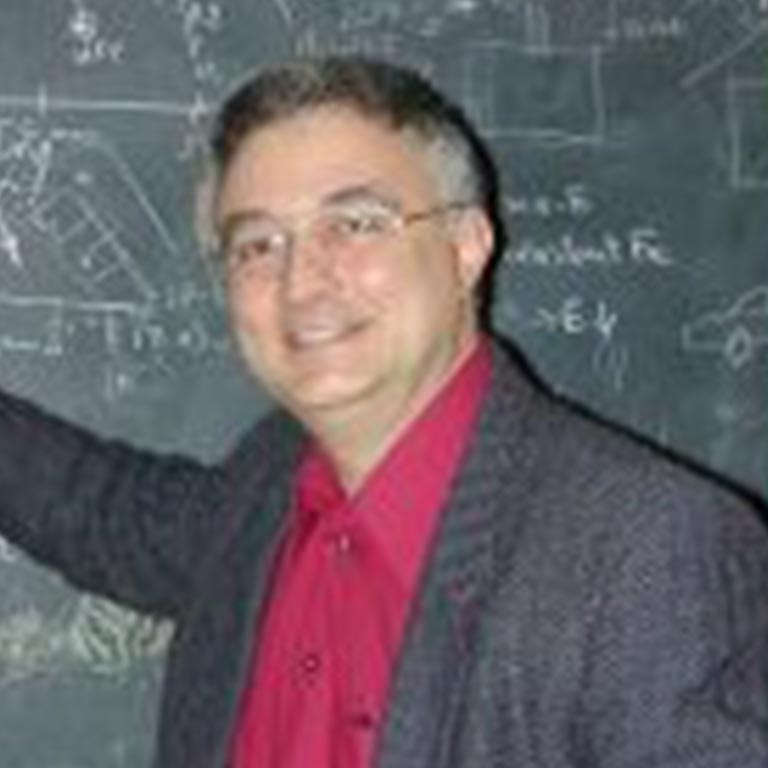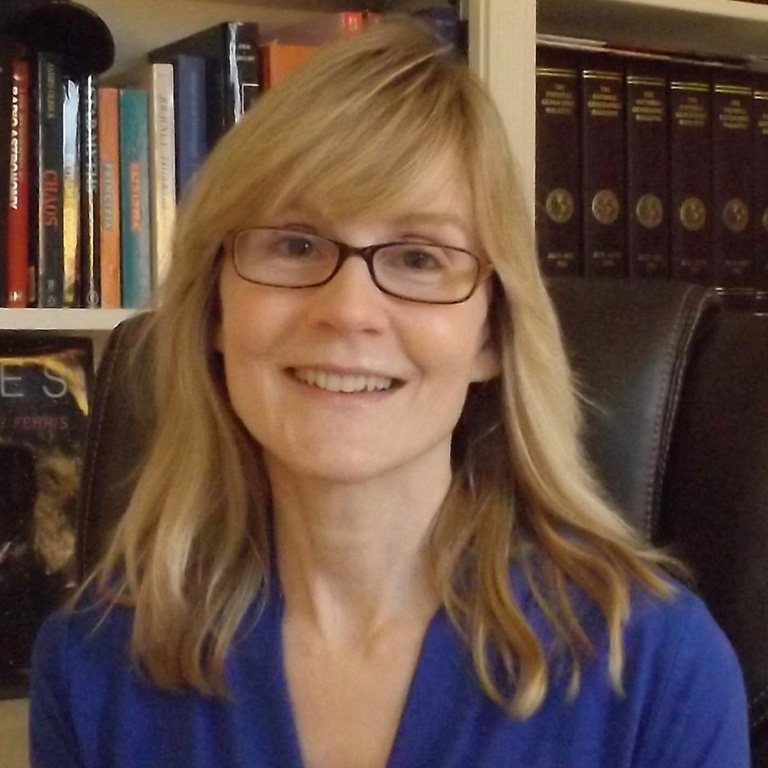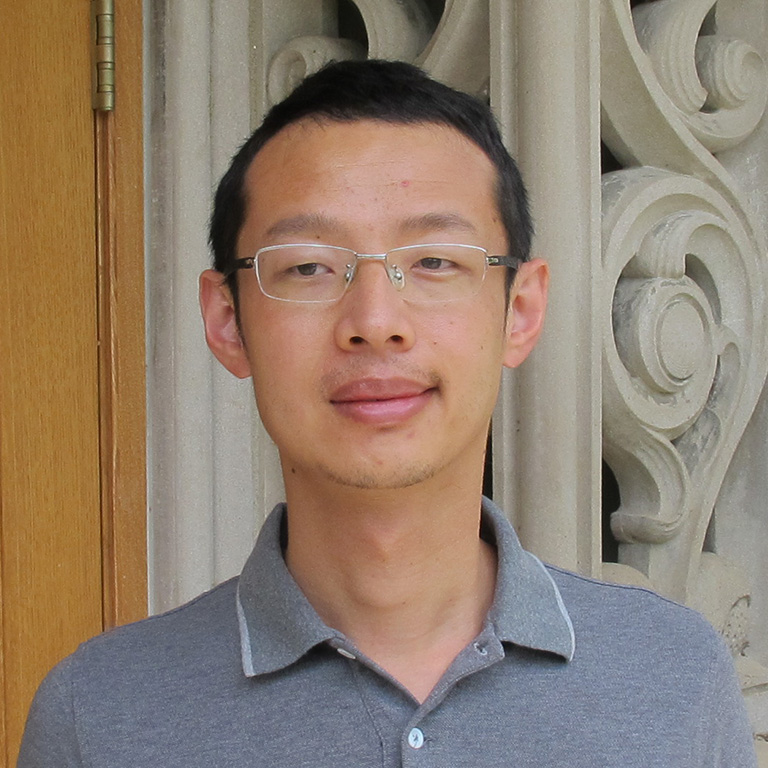In the last two decades, astronomers have discovered thousands of exoplanets – planets that orbit stars other than our sun. How does our Solar System fit into the context of the Galactic exoplanetary census? IU astronomers combine observations, dynamical simulations, and theory to learn about planetary systems around other stars to compare with our own. Astronomers also study the properties of exoplanet host stars – the suns of those other worlds.
Exoplanets
Constantine Deliyannis
 Constantine Deliyannis examines the properties of exoplanet host stars. Host stars and their planet(s) interact with each other gravitationally and share a common formation and evolutionary history, so understanding the detailed properties of the parent star is crucial to understanding the characteristics of the planet(s) in orbit around it. He characterizes the detailed properties of the host stars such as mass, radius, detailed chemical composition, and rotation. Astronomers need accurate measurements of the masses and radii of stars that host planets in order to determine the masses and sizes of planets orbiting those stars.
Constantine Deliyannis examines the properties of exoplanet host stars. Host stars and their planet(s) interact with each other gravitationally and share a common formation and evolutionary history, so understanding the detailed properties of the parent star is crucial to understanding the characteristics of the planet(s) in orbit around it. He characterizes the detailed properties of the host stars such as mass, radius, detailed chemical composition, and rotation. Astronomers need accurate measurements of the masses and radii of stars that host planets in order to determine the masses and sizes of planets orbiting those stars.
Deliyannis and his students also have used the Hydra multi-fiber spectrograph on the 3.5-m WIYN telescope to examine fast-rotating stars in the Pleiades, Praesepe, and Messier 35 star clusters, and have found evidence that fast rotation inflates the radii of stars by about 10-15% compared to more slowly rotating stars. All of these properties have important implications regarding whether or not a particular star and planetary system is capable of sustaining life.
Pleiades, Praesepe, and M 35 projects have been supported by NASA NN-Explore grants.
Caty Pilachowski
 Catherine Pilachowski is a co-investigator on a $750K NASA EPSCOR award “Igniting a New Era of Planet Discovery with FHiRE: A Precision Spectrograph at the WIRO Telescope” to the University of Wyoming for the construction of a precision radial velocity spectrograph for use on the University of Wyoming 2.3-meter research telescope southwest of Laramie. Construction of the spectrograph is nearly complete, and commissioning will begin in the next few months. Through an agreement with the University of Wyoming, Indiana University astronomers will receive 15 nights per year on the WIRO telescope for 8 years to carry out exoplanet research using the spectrograph.
Catherine Pilachowski is a co-investigator on a $750K NASA EPSCOR award “Igniting a New Era of Planet Discovery with FHiRE: A Precision Spectrograph at the WIRO Telescope” to the University of Wyoming for the construction of a precision radial velocity spectrograph for use on the University of Wyoming 2.3-meter research telescope southwest of Laramie. Construction of the spectrograph is nearly complete, and commissioning will begin in the next few months. Through an agreement with the University of Wyoming, Indiana University astronomers will receive 15 nights per year on the WIRO telescope for 8 years to carry out exoplanet research using the spectrograph.
Pilachowski is also participating in a NASA-funded collaboration to characterize the compositions of M-dwarfs and to use those compositions to create realistic models of the interior compositions of putative exoplanets orbiting those M-dwarfs. A key activity of the collaboration is the development of an IR abundance pipeline appropriate for M-dwarf stars along with a vetted IR molecular line list that is capable of simultaneously fitting the stellar spectra while adjusting abundances and stellar parameters. From the measured abundances, the collaboration will predict the likely mass ranges that would classify the planets as rocky.
Katherine Rhode
 Katherine Rhode’s research interests include the evolution of young, Sun-like stars and their surrounding protoplanetary disks. She and her students use the Hydra multi-fiber spectrograph on the WIYN 3.5-m telescope to measure the rotational velocities and sizes of young stars in nearby star clusters like the Orion Nebula Cluster, IC 348, and NGC 2264 (a.k.a. the Christmas Tree Cluster). These young stars are in the early stages of forming their own planetary systems, so studying how the stars evolve and interact with their protoplanetary disks helps us better understand the origins of our own Solar System.
Katherine Rhode’s research interests include the evolution of young, Sun-like stars and their surrounding protoplanetary disks. She and her students use the Hydra multi-fiber spectrograph on the WIYN 3.5-m telescope to measure the rotational velocities and sizes of young stars in nearby star clusters like the Orion Nebula Cluster, IC 348, and NGC 2264 (a.k.a. the Christmas Tree Cluster). These young stars are in the early stages of forming their own planetary systems, so studying how the stars evolve and interact with their protoplanetary disks helps us better understand the origins of our own Solar System.
Songhu Wang
 Songhu Wang’s research centers on setting our Solar System into the context of the Galactic exoplanetary census by leveraging a full range of advanced observations, dynamical simulations, and theoretical insight. His and graduate and undergraduate students work on projects that take advantage of state-of-the-art NEID spectrograph at the 3.5 m WIYN telescope and conduct advanced theoretical and observational studies.
Songhu Wang’s research centers on setting our Solar System into the context of the Galactic exoplanetary census by leveraging a full range of advanced observations, dynamical simulations, and theoretical insight. His and graduate and undergraduate students work on projects that take advantage of state-of-the-art NEID spectrograph at the 3.5 m WIYN telescope and conduct advanced theoretical and observational studies.
Recent NEID observations of the exoplanet system WASP-148 (V=12.2 mag) demonstrate that NEID can achieve velocity precision on faint stars comparable to HIRES on the much larger KECK telescope. Wang and his team found a hot Jupiter whose orbit is aligned with the host star’s equator and a nearby warm Jupiter whose orbit is inclined by 33°, a configuration that has never been seen before. This system provides the first piece of direct evidence that hot Jupiters could form through quiescent channels, and the observed dynamical hot properties of the hot Jupiter population could be excited by the post-disk dynamical interactions.
Wang’s team will take advantage of space-based telescopes (e.g., NASA’s ongoing TESS mission, ESA’s ongoing Gaia mission, and upcoming PLATO mission), as well as ground-based telescopes, especially WIYN/NEID, and focus on not only detecting new exoplanets, but also accurately characterizing their geometries (radii, masses, eccentricities, multiplicities, stellar obliquities, and mutual inclinations), which will provide direct evidence for planet formation models.
Cristobal Petrovich
 Petrovich’s research centers on the theory of planet formation and evolution. His research group combines computational simulations, semi-analytical calculations, and statistics to understand the dynamical evolution of exoplanet systems from their infancy to their long-term fates.
Petrovich’s research centers on the theory of planet formation and evolution. His research group combines computational simulations, semi-analytical calculations, and statistics to understand the dynamical evolution of exoplanet systems from their infancy to their long-term fates.
In the context of young exoplanet systems, Petrovich’s group aims to understand what types of exoplanets and orbital architectures emerge from their birth protoplanetary disks by modeling the dynamical substructures (gaps, rings, and crescents) sculpted by embedded planets, which are readily observable by ALMA. Their recent work provided a global model for HD163296, one of the best studied protoplanetary disks, and showed that the dust and gas emission can be well reproduced by a four-planet system in a resonance chain. Such architecture provides significant evidence that the planets are currently undergoing orbital migration induced by their parent disk.
Petrovich’s team also studies how the long-term evolution of exoplanet systems is further shaped by tidal interactions with their host stars, dynamical instabilities, and stellar evolution and multiplicity. By comparing the predictions from the models to the observed exoplanet frequencies and orbital architectures they assess what processes are most relevant at shaping the exoplanets that we observe today. A major focus from the group is on the origin of short-period planets, including the puzzling populations of the hot Jupiters and hot Neptunes.

 The College of Arts
The College of Arts